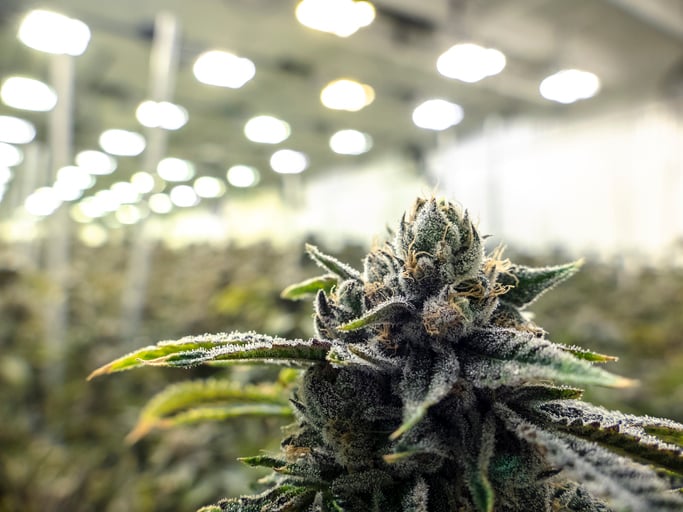Just a year ago, many would have pointed to Canopy Growth (CGC 6.43%) -- the largest cannabis company in the world by market cap -- as the crown jewel of the promising marijuana industry. What a difference a few months make: Canopy has been absolutely pummeled on the stock market over the past six months -- as have many of the other top pot companies -- and its shares have lost more than 60% of their value since April.
The issues that have led to these struggles are well documented and include a slow rollout of physical stores and supply issues in the Canadian market. However, the worst may be yet to come for Canopy. There are two key reasons why the pot stock could sink even lower.

Image source: Getty Images
1. All eyes on Canopy's next earnings report
Canopy's latest earnings report, which was for the first quarter of its fiscal year 2020, was profoundly disappointing. The company not only recorded a sequential decline in its revenues, but its net loss widened significantly as well. Turning that around when Canopy reports its Q2 financial results on November 14th would be a good way to get back in the good graces of investors. But what little data we have so far from how some of its competitors have performed hardly inspires confidence.
Aphria released its earnings report on October 15th, and although the Ontario-based company impressed investors by returning a net profit for the second quarter in a row, the bulk of its revenues (about 74%) were generated in international markets. The revenues from cannabis produced from Aphria-- which it generates from its domestic operations -- increased by only 4% sequentially. While Hexo managed an 18% sequential increase in its top-line during its fourth-quarter, but the company's average selling price for the recreational and medical segments decreased by 11% and 9%, respectively.
Sure, Canopy offers arguments few other Canadian cannabis companies do: One of the highest production capacities in Canada and supply agreements with every Canadian province, among others. The company could post better than expected revenues and earnings figures, but given the aforementioned issues in its domestic market (where it still generates the majority of its revenues), and the relatively average performances of some of its peers, the slightest misstep could plunge the company into even deeper troubles.
2. The delayed launch of the derivatives market
The official opening of the market for derivative cannabis products in Canada -- or legalization 2.0 as it has come to be called -- officially happened on October 17th. This is great news for Canadian marijuana companies since they can now venture into more segments of the market, many of which carry much higher margins than the sale of dried flower products.
Canopy is well-positioned to profit from this opportunity. The company has a partnership with Constellation Brands, which gives it access to boatloads of cash and the ability to develop high-margin cannabis-infused beverages to put on the market.
But there are at least three main issues with which Canopy will have to contend. First, these products won't hit the shelves at least until mid-December, so the company won't be able to see a material impact from them for a little while longer. Second, Health Canada is still not allowing alcohol-based infused beverages, which means Canopy and its partner, Constellation Brands, will have to navigate around that, at least for now. Third, this promises to be an extremely competitive race, and while Canopy has the tools to compete with the best of them, the company may end up with a smaller piece of the pie than we think.
What's next for Canopy?
At this point, the only guarantee we have is that the marijuana industry will be worth substantially more than it is now in a few year's time. Canopy's standing in the industry could help it ride the current waves successfully, and the company may end up being one of the biggest winners in the long run. But we likely haven't seen the end of Canopy's near-term issues.







